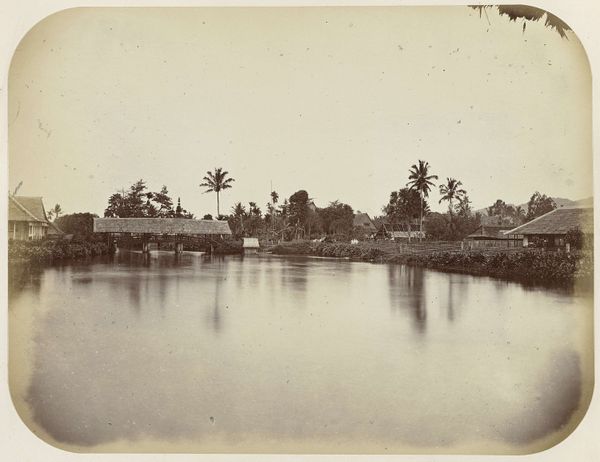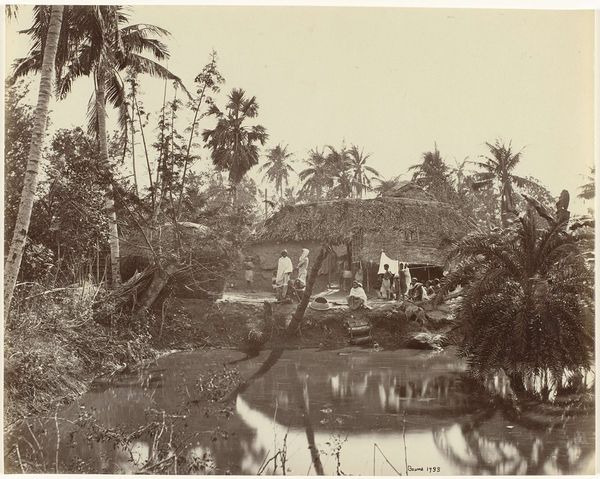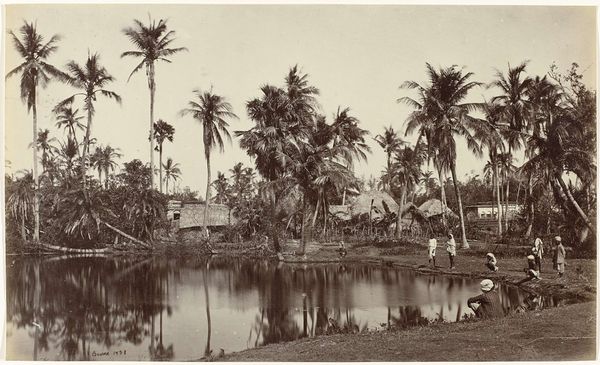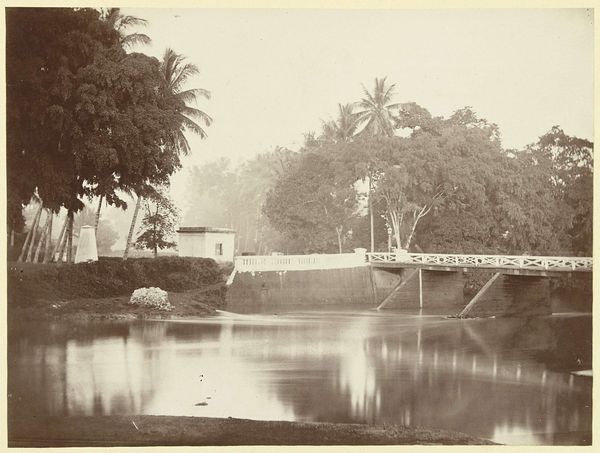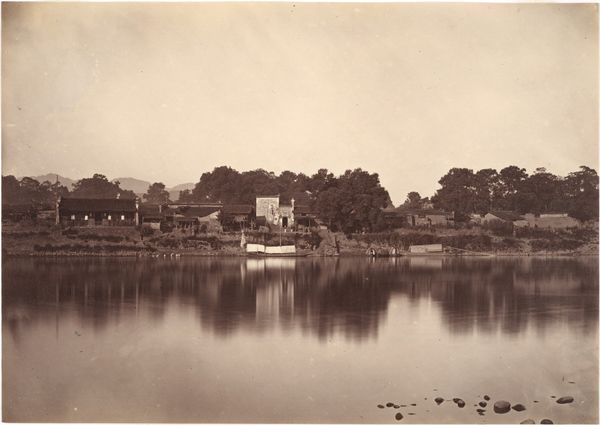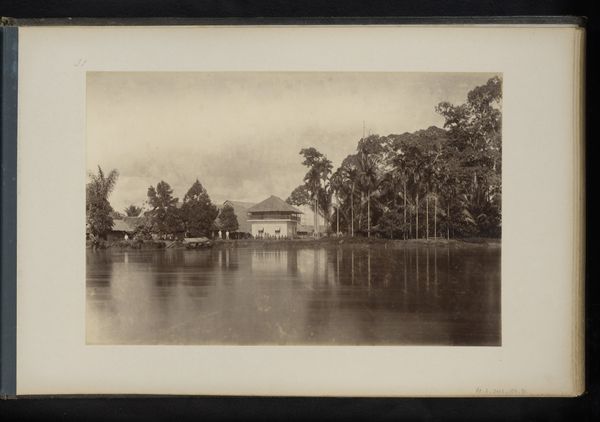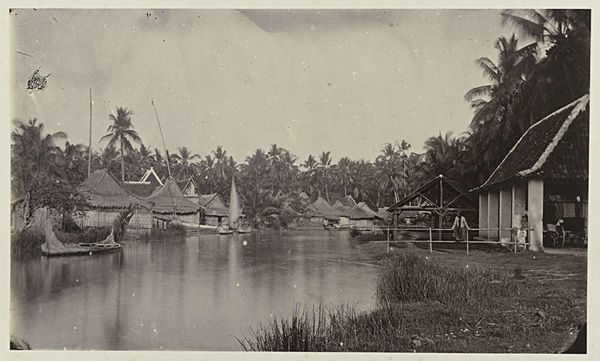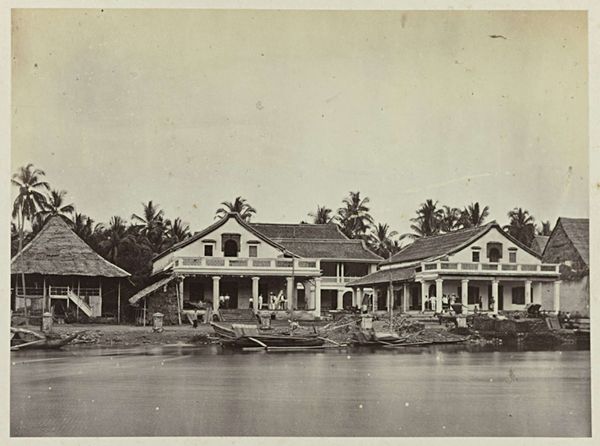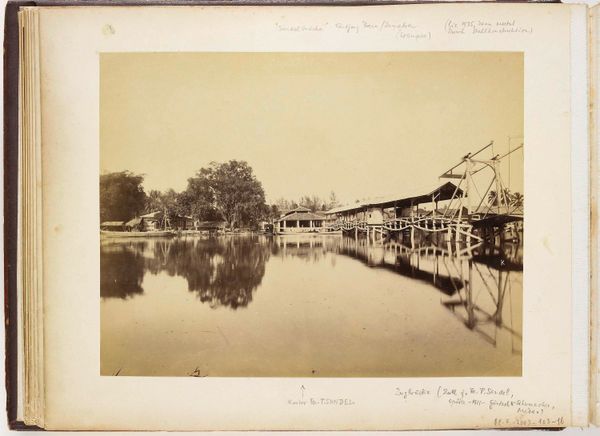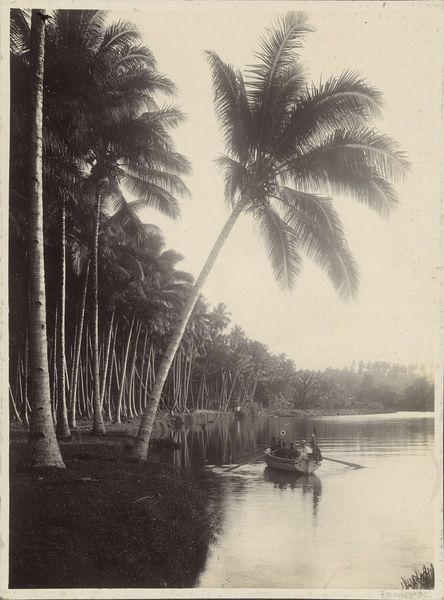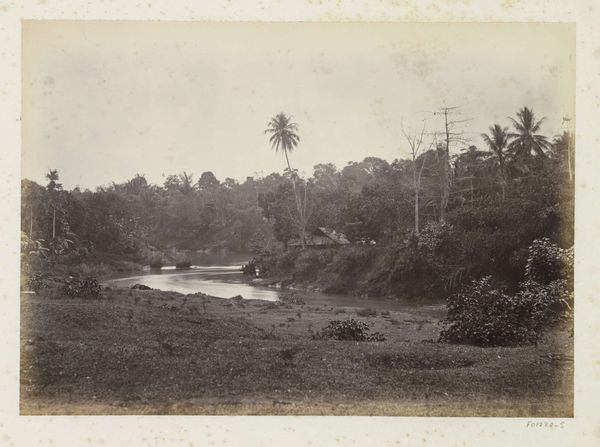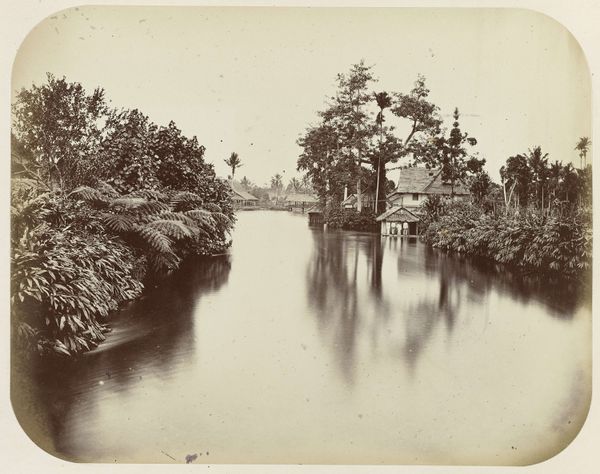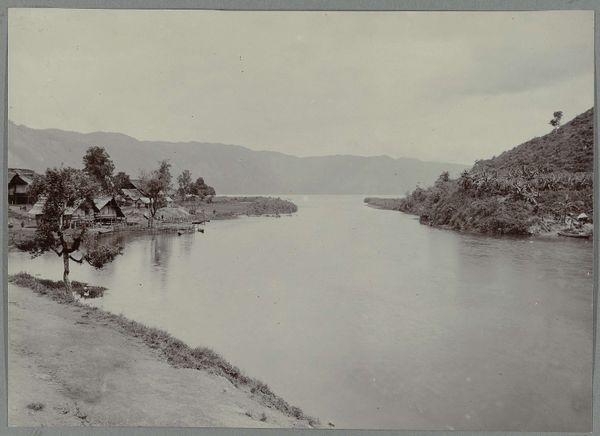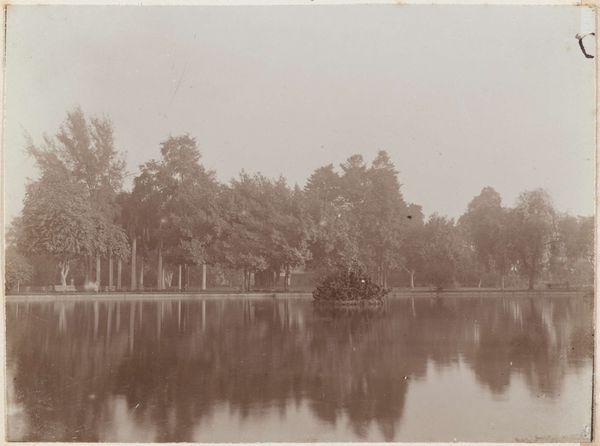
albumen-print, photography
#
albumen-print
#
landscape
#
outdoor photograph
#
photography
#
19th century
#
watercolor
Dimensions: Image: 20 x 27.3 cm (7 7/8 x 10 3/4 in.) Mount: 30.5 x 38.2 cm (12 x 15 1/16 in.)
Copyright: Public Domain
Editor: This gelatin-silver print from 1871, “Tropical Scenery, Santa Maria del Real, Darien” by John Moran, has such a stillness about it. The water is like a mirror, reflecting the structures on the riverbank. What sociopolitical stories do you think this image tells? Curator: This photograph provides a window into the colonial gaze of the 19th century. The very act of photographing this scene, framing the indigenous village as "scenery," speaks to the power dynamics at play. Notice how the village, and thus its inhabitants, are passively observed, arranged almost like an ethnographic display. Editor: It definitely feels…distant, doesn’t it? Were these images used to promote certain colonial agendas? Curator: Precisely. Images like this often served to construct a narrative of exoticism, justifying colonial expansion and portraying indigenous populations as passive recipients of progress. It's important to remember that photography at this time was not just a neutral recording device, but a tool deeply embedded in the politics of representation. What do you make of the detail, or lack thereof, given this context? Editor: Now that you mention it, the details are somewhat blurred. It's beautiful, but it doesn't really capture the texture or lived reality of the village itself. It almost feels… romanticized, even though it's a photograph. Curator: That's a keen observation. The softened focus contributes to a generalized image of the "tropical," minimizing any specific cultural identity of the Darien people. This act of simplification, I think, served to reinforce the dominant cultural narrative, overshadowing the specific stories and experiences within that community. Editor: So, it’s more than just a landscape; it's a commentary on power, representation, and the role of photography in shaping our understanding of different cultures. Curator: Exactly! It reveals how seemingly objective documentation can be imbued with cultural and political implications, impacting how we perceive and interact with different societies. Editor: Wow, I hadn’t thought of it that way. Thanks for showing me there's so much more than just meets the eye! Curator: Indeed! It highlights the necessity for viewers to critically evaluate the historical and social context in which such photographs are created and consumed.
Comments
No comments
Be the first to comment and join the conversation on the ultimate creative platform.
